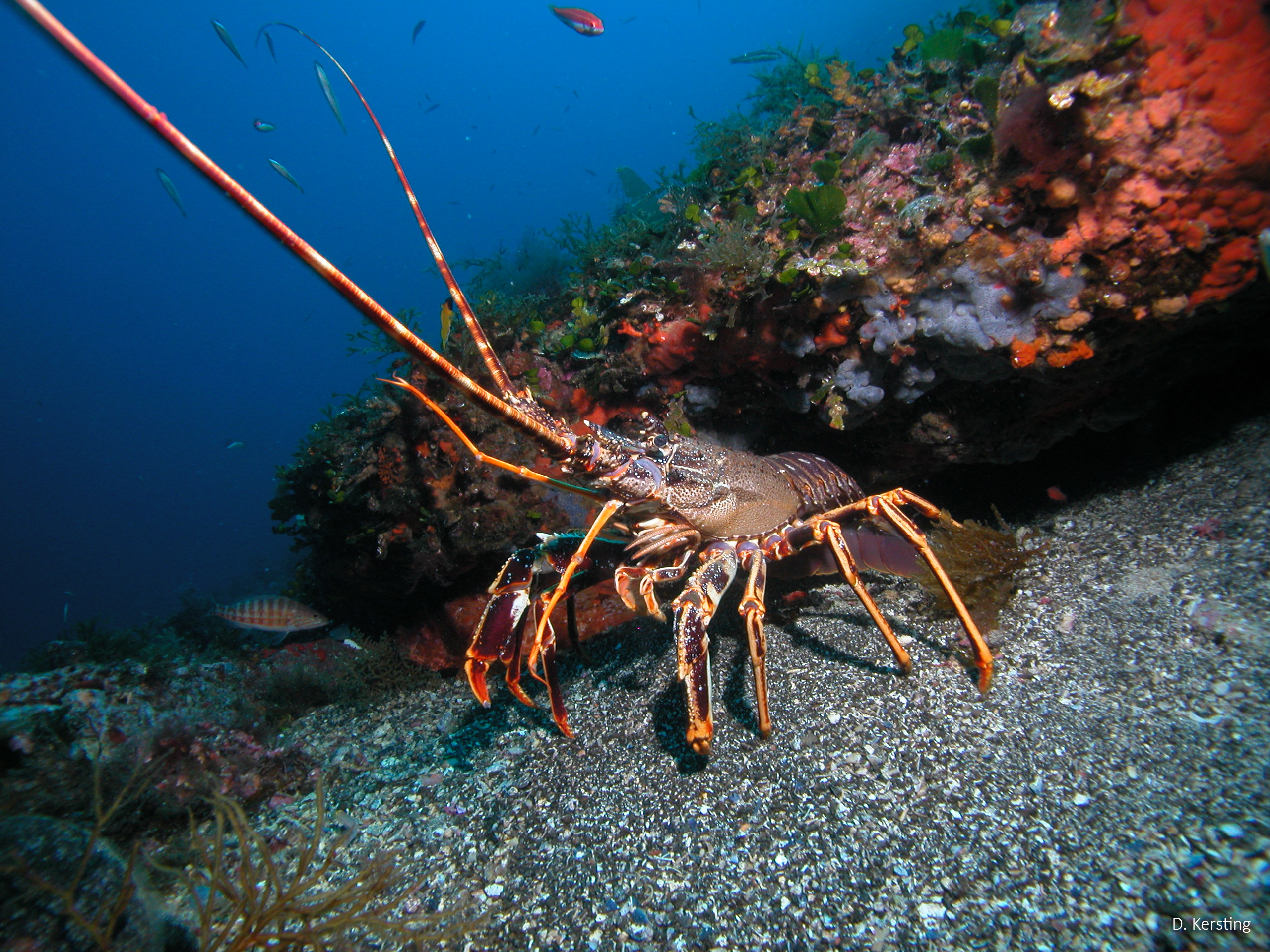
The lobster of the Columbretes, the queen of the bottom of the islands
Among the many species that inhabit the Columbretes Islands we can highlight the presence of the lobster, an arthropod that inhabits the seabed of the archipelago and that makes walking through this immersed immensity, a unique experience and very satisfactory. The presence of these species makes the immersions in the Mediterranean an adventure to discover all that the Columbretes offers its visitors.
The lobsters live in backgrounds formed by sand and rock, so they find in the Columbretes Island a very attractive place to live. The cracks and the forms that are in the bottom are very adapted to live and in them they hide so that the divers can find them with facility.
Although they lack perfect vision, they use the large antennas they have in their heads to guide and identify their food. They are scavengers, so they search among the remains left by other species, usually predators. The lobster that lives in the Columbretes Islands usually measure between 40 and 50 centimeters and have a weight, when they reach the adult stage, of between 4 and 5 kilos.
The lobster body is covered with a solid armor that protects it from the attack of other marine creatures that choose it as part of its menu. It has a orange tone, which allows it to blend in with the seabed.
Lobsters usually live at a depth between 20 and 80 meters
They are usually found at a depth of between 20 and 80 meters deep, although they have also been found between 10 and 160 meters. It is usually a species that has a good longevity and its meat is highly prized in the gastronomy of the province of Castellón. However, in the Columbretes Islands fishing is not allowed and only captures can be made from a mile and a half away from them.
The Reserve allows the lobster to have experienced a significant increase in numbers, decimated a few years earlier due to overfishing. In the Columbretes can reproduce without problems and today is one of the most sought after species by divers.

